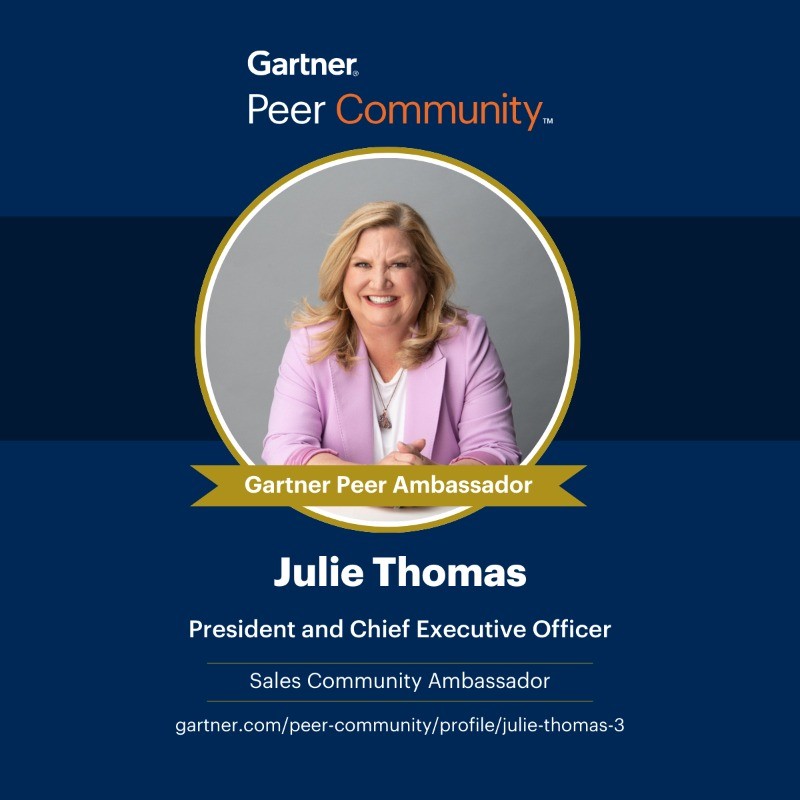Executives Not Returning Your Calls? Develop a Sales Roadmap to Change That
Editor's Note: As 2020 approaches, we're looking back at some of 2019's most popular posts on the LinkedIn Sales Blog. This guest post, which was contributed by Julie Thomas, CEO of ValueSelling Associates, ranked No. 13.
Sales professionals devote time to understanding a target company’s strategic roadmap to determine where their solutions might fit in. Unfortunately, these same professionals don’t always give equal consideration to their own strategies for getting in the door to talk to executive buyers. As a result, busy executives aren’t returning their calls.
As a sales professional, the first thing you should ask yourself is: Why would they?
What have you done to make it worth the time to start a conversation with someone in the C-suite? Establishing such a prospect-centric strategy is foundational to any sales campaign, and yet so many salespeople essentially wing it, launching into cold calls or emails without a clear plan, let alone a clever one.
Here are some tips to help you develop a solid sales roadmap that will incent executives to pick up the phone.
Don’t necessarily start at the top.
This advice sounds counterintuitive, but it is through referrals that you have a strong likelihood of executives connecting with you. One of the most valuable features of LinkedIn is finding 1st-degree, 2nd-degree or 3rd-degree connections who will broker a warm introduction to the target executive. Fellow members of your LinkedIn groups can help you connect too, making it easier to find your way in.
The other reason to not focus exclusively on a target executive: most major purchasing decisions are now done by committees that include other stakeholders. Leaving a good first impression on any one of these qualified prospects involved in the buying decision can raise your access rate to top leadership.
Prepare a credibility statement.
One of the best ways to leave a positive initial impression during an introductory conversation is to quickly connect your solutions to the buyer’s needs. Prepare a few questions to discover business issues instead of reciting your resume. Then with a compelling and succinct credibility statement you can swiftly gain the interest of a busy executive who likes what they hear, and is intrigued to learn more. For more insights on how to create a credibility statement, read “4 Steps to Establishing Credibility.”
Talk business, not product.
When these two steps work and the executive is willing to meet with you, be prepared for a business conversation. This means asking probing questions to uncover the business issues or problems that are preventing the executive from achieving his or her company’s strategic or operational goals, as well as meeting his or her own professional goals. Avoid talking up product benefits and features when you have limited time with a busy executive. By asking the right questions, you will be able to share how your solutions address their challenges, and ultimately satisfy their business objectives.
Stay connected.
Should there be a lengthy sales cycle due to the complexity of the solution, the number of people involved in the decision-making process or budget constraints, do not give up the access you’ve gained. It’s important to have a plan to keep in touch until a decision is made. The frequency and mode of messaging will depend on a person’s preferences. In any case, make sure there is value in those subsequent communications. You might send along a relevant industry report or white paper, or a link to a just-published case study that resonates. Engaging via social networks is also an easy, earnest way to stay connected.
Notice all of these tips focus on what you can do for someone else, not yourself. Executives—and their gatekeeper assistants—know why you are calling. After all, most C-suite executives have used their own powers of persuasion to fulfill their organization’s strategic goals. Demonstrate through a thoughtful strategy that you deserve a moment of their time, and they are more likely to grant it.
To keep pace with the latest thinking in sales, subscribe to the LinkedIn Sales Blog today.
Topics: Sales trends
Related articles




